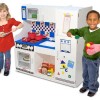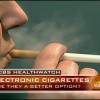So a little about me….
I am originally from England – you would have known that if you read the “about Dr Whiteson” in the bio!! I met my future wife in London back in 1985. She was 17 and I was 20, a poor medical student who took a job as a tour leader and met his bride-to-be. Long story short, Janine, an American, moved to London, completed her studies, went on to follow her career passion – Nutrition – completing a Masters of Science in Nutrition at the world famous Kings College, London. She launched her career as a Nutritionist, counseling her many clients on good nutrition for health, and how to avoid common ailments like diabetes, obesity and heart disease. Fast forward 15 years and here we are, in New York City with 2 young boys facing the challenges we all face as individuals and parents in a society pulled towards fast food, leisure time spent in front of computer screens and TV and a trend of declining health amongst young and old alike.
Both Janine and I in our respective lines of work are seeing dietary related disease in younger and younger people and children that we used to see only in older people. And the National statistics support this as well.
Childhood obesity has nearly tripled in the past 30 years, now approaching 20% – that is 1 in 5 kids are OBESE !! Nearly 1 in 3 are overweight! www.cdc.gov/healthyyouth/obesity/ Â Match that to the rising trend of kids eating fast foods!
More and more kids spend leisure time in front of TVs and computer games and so are doing less activity and sports. www.getkidsinaction.org/exercise/ Â This has a direct correlation with increasing obesity, diabetes and high blood pressure rates seen in children.
And adult onset, or type 2 diabetes – the diabetes associated with being overweight and not normally seen until people reach their 60’s and 70’s – is now developing in children at an alarming rate. www.cdc.gov/diabetes/projects/cda2.htm
The outcome of  all of this is the rising incidence of risk factors for heart disease in our children that can lead to premature heart disease when these children reach their 40’s and 50’s! Now that is just too young to have heart disease!!! And don’t forget that for many, the presentation of heart disease is sudden death from a heart attack!  Also consider that heart disease for the most part is preventable, and start thinking that somehow, someway we are doing ourselves, our kids and society in general a huge disservice by allowing this to happen.
Every day, I work with victims of heart disease. Men and women as young as mid-30’s, right through to those in their 80’s and 90’s who, due to poor attention to childhood and young adult lifestyle habits, developed high blood pressure, high cholesterol, diabetes, obesity, smoked or were overly sedentary. I see them scared, suffering and wondering what the future holds. It is a challenge to make changes at that stage in life, to turn things around and do the right thing for your heart health. As I said, this is the work I do every day, and for the most part, have really excellent success! (there are sadly always some situations impossible to reverse, or even more sad, some people who just cant, or wont, reverse their deadly habits!) But how I long for the day when the focus of my practice turns from putting out the raging fires of established heart disease, to spending more and more time with younger adults and children helping them live heart healthy lifestyles, prevent those risk factors I have been talking about, and so see them live long, healthy, productive lives free from heart disease.
Janine and I, as parents of two young boys, think of their future in a society that is in the midst of a heart disease epidemic. There is no doubt they are as vulnerable to the pressures of our society as any kid. They see the commercials for fast food, for sedentary computer games and TV shows. They like candies and ice cream and burgers like any kid. They love to ‘game’ on their computer consoles with other kids half way around the world. At school, they cry for the chicken nuggets, pizza and toasted cheese sandwiches. And the school vending machines are crammed with high calorie high sugar colas. It looks like the odds are stacked against us!!! And while the Government is trying, on all of our behalf, to control this fragile situation of the health of the nations children, the final responsibility and actions fall to you . us – the parents / aunts / uncles / grandparents of our kids.
So what can you do? Well, I can tell you what we do and see if you can get some ideas for your kids. Another time I will go into details of activity and exercise for your kids, but for now suffice it to say that I think your kid should be getting at least 1-2 hours of moderate to vigorous activity daily. Now that may be more than the current Government recommendations, but it is a target set to overcome the the 2-4 hours that most kids spend every day sedentary in foront of the TV or computer!
So what about our kids nutrition? Well we believe in bringing our kids food ‘back into our home’. Getting back to home cooking! Don’t forget, the more you eat out, at diners, fast food joints, even school cafeterias, the less control you have over what your kids eat. You are losing an opportunity to provide heart healthy foods to your kids and to teach them about food basics that can lead to healthy food habits for a lifetime. Of course we realize that fast food and school lunches allow us more time for our own busy lives, but we are not doing our kids any favors.
Instead, we focus a lot of our time on food. Not in an overly compulsive or obsessive way, but we make it fun and a family project. We start by planning as a family for some meals for the week that we all love. A pasta dish, a stir fry, fish, burgers. You can chose anything you like. Work out what ingredients you need – make a list. Do this with your kids. It can be so much fun and depending on their age, there can be so many talking points and chances for ‘education’. As a family, once or twice a month (I know my wife goes more often to keep us stocked up in-between, and we don’t want to ‘make’ the kids go more often so it becomes a ‘chore’) we go to the supermarket and shop. I LOVE supermarket shopping! We have such a laugh! But also to wonder at the amazing variety and colors, shapes, feels and smells of the fresh produce. Where in the world do they come from. We talk geography and travel. Fantasize about trips to discover new fruits and foods. For my 5 year old, we count out the pieces of fruit, we practice reading cereal boxes – he can only have a chance of getting the cereal he wants if he can read the name of the box! My 11 year old is starting to read food labels. If he cant pronounce the additives – he cant have the product – that counts out most of the over-processed pre-oackaged foods that not even we can read the additives and in any way, we feel, are just not good for you. We talk about fat, about sodium, about organic farming vs. hormone derived meats and milk. He understands and is very interested. It is a ‘green’ conversation, and America’s kids are understanding more and more about the environment, chemicals and toxins. While we are shopping we also talk about our meals and dishes we are going to cook – out stomachs rumble with anticipation.
Once home, as a family we put away the foods – fridge, pantry etc. And then we start to cook. All together, as a family! We all have our roles. Ellis (5 years old) will pour, mix, taste test. Harris (11 years old) will chop, stir fry, serve. Janine (ageless!) will supervise, add herbs and spices to flavor, direct cooking times and heat. I do everything else! Peel, throw out garbage, wash up! Again, cooking has become a family affair. Fun, a time to practice different skills, for my wife and I to feed back how well the boys are doing – positive feedback about their cooking skills has really helped us keep this ‘nutrition plan’ going.
When we eat, we sit down as a family. We pay attention to serving sizes – avoiding super-sizing our kids meals. We eat slowly and taste the food by chewing slowly. We try to make it a relaxed time. Together we enjoy the ‘fruits of our labor’! And enjoy we do. Even if we missed the mark and something does not taste as we thought it would, or is too dry, too cold, not tasty enough, we still have really enjoyed the whole process. And cant wait to do it again later in the week. Janine and Harris will cook together 2 or 3 times a week. Quick and easy meals. Simple. But the benefits are significant and long lasting. Family time, a chance to discuss, learning about health and nutrition, giving our kids the knowledge and practical tools to move forwards with a heart healthy lifestyle.
A few other points: every now and then we do let the kids have fast-foods. As a treat. They enjoy it and it satisfies their inquisitiveness or they get the toy from the latest movie they saw. For the most part, we make the kids sandwiches for school lunch, and provide a snack and a piece of fruit. Even a PBJ sandwich is better than most school cafeteria foods. We give them water and steer them away from the sodas. We don’t have soda at home. Drinking choices are #1 water, #2 skim milk, #3 OJ – not too much – high in calories, #4 AJ. What else do you need?!?!?! Snacks at home start with fruit, vegetables or a fat-free yoghurt. If they are still hungry (usually not) then small portions of goldfish or cheese-flavored cracker snacks satisfy.
So remember that it is YOU who is in control of your child’s health. The responsibility is yours – not the schools or the teachers or the Government, and certainly the fast food chains care very little for your or your kids health, no matter what they say or advertise! Take the responsibility, shop and cook and eat with your kids, and have fun family time while doing it. As you get into the swing of this you will clearly see, kids in the kitchen are a great help, never a hindrance.
Eat well – have fun – live well!



